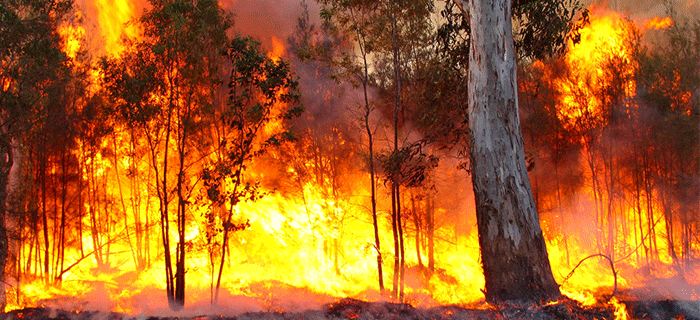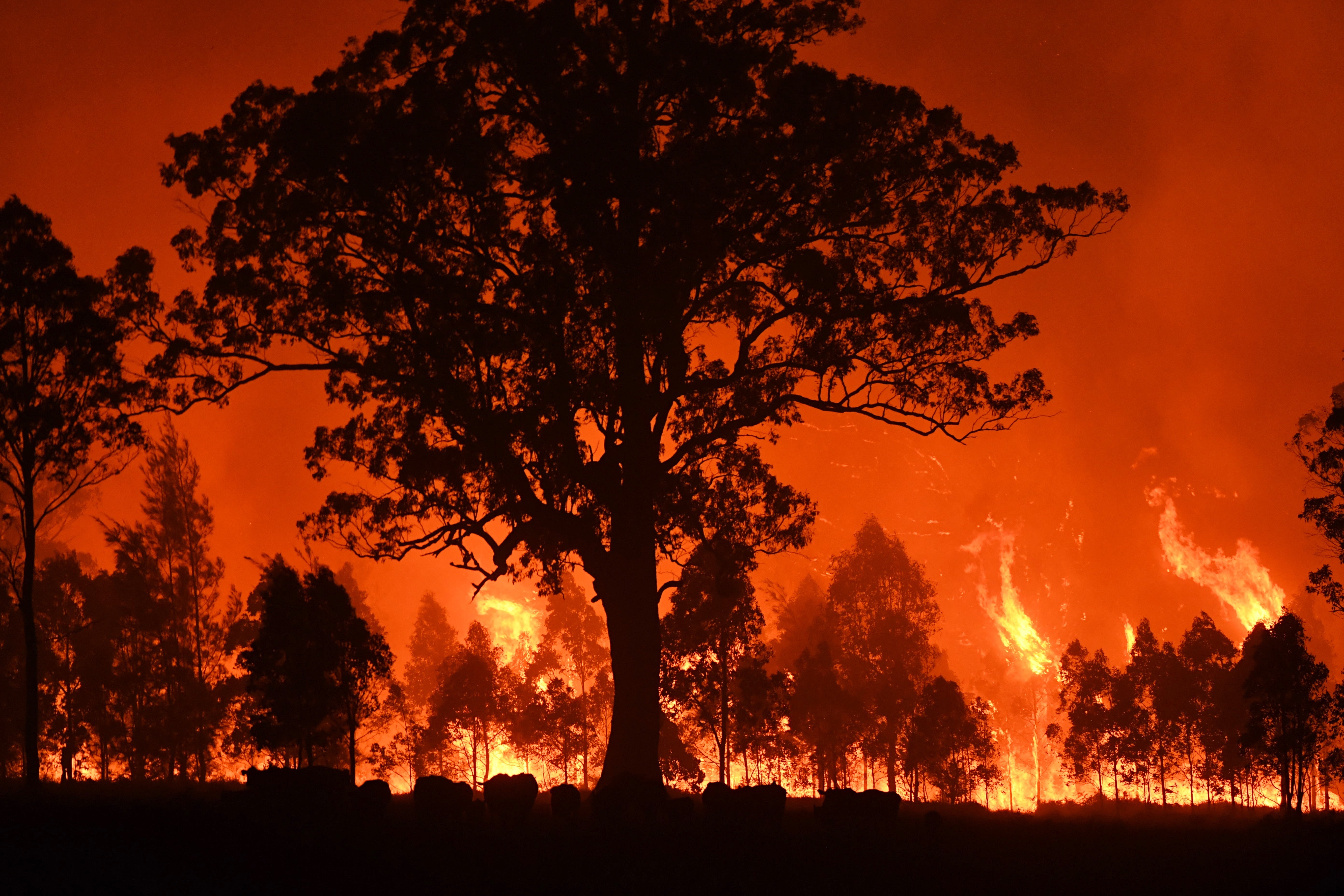BMP Insights: Trick Parts and Benefits of a Bushfire Management Plan
Wiki Article
Best Practices in Bushfire Monitoring for Comprehensive Fire Protection
In the world of bushfire administration, the quest for comprehensive fire security demands a careful strategy that encompasses numerous vital aspects. From rigorous danger analysis and tactical preparation to the application of efficient greenery management strategies, the range of ideal methods is substantial and detailed. Area interaction and education play crucial roles in fostering resilience and preparedness, while very early detection and warning systems work as critical safeguards. In addition, the smooth coordination of emergency feedback and evacuation strategies is necessary for making sure the safety and wellness of people in the face of escalating bushfire hazards. As we browse with the nuances of these best practices, an expedition right into the detailed web of methodologies and strategies awaits, assuring a much deeper understanding of the multifaceted landscape of bushfire monitoring for detailed fire defense.Risk Evaluation and Preparation
In bushfire management for fire defense, the first step includes carrying out a complete danger evaluation and establishing a comprehensive strategy to reduce prospective hazards. Risk assessment is an important procedure that entails recognizing, analyzing, and assessing prospective dangers that might bring about a bushfire. This evaluation considers numerous aspects such as weather, topography, gas lots, and human activities in the area. By comprehending these threats, fire protection authorities can focus on areas that are most at risk to bushfires and allot resources effectively.Following the threat evaluation, the following crucial step is to establish a comprehensive strategy to resolve the determined threats. This strategy must describe approaches for avoidance, preparedness, action, and recovery in case of a bushfire. It must also include steps for area engagement, communication, and emptying treatments. By having a well-defined plan in location, emergency situation services can act quickly and successfully to safeguard lives, residential property, and the setting during a bushfire outbreak. Efficient danger assessment and planning are essential elements of bushfire administration for making certain comprehensive fire security.
Plants Management Methods
After performing an extensive danger analysis and creating a detailed plan for bushfire administration, the emphasis shifts to executing effective plants monitoring methods. Plants monitoring plays a crucial duty in reducing the strength and spread of bushfires.Along with creating defensible area, suggested burning is one more vital plants monitoring approach. Prescribed burns entail intentionally setting fires under controlled conditions to lower the build-up of gas, lower the chance of high-intensity wildfires, and advertise environment health. By purposefully burning areas with excess greenery, gas degrees are minimized, making it harder for fires to spread swiftly and frantically.

Area Engagement and Education And Learning
Reliable community involvement and education are essential elements in building a resistant and aggressive strategy to bushfire management. By including community participants in the preparation and execution of bushfire monitoring strategies, stakeholders become active participants in safeguarding their homes and communities. Area involvement fosters a sense of common responsibility and equips locals to take ownership of their safety and security.Education and learning plays a critical role in furnishing people with the understanding and skills required to alleviate bushfire dangers successfully. Offering academic resources ablaze prevention, evacuation treatments, and the value of early discovery can substantially boost community readiness. Furthermore, educating homeowners on the regional bushfire setting, including fire behavior and risk factors, enables them to make educated decisions throughout high-risk circumstances.
With continuous interaction and education efforts, communities can create a cumulative understanding of bushfire risks and job collaboratively to minimize the impact of wildfires. By promoting a culture of readiness and durability, community participants can improve their capability to respond successfully to bushfire emergency situations and shield both lives and property.

Very Early Discovery and Caution Systems
Community involvement and education act as foundational pillars in establishing proactive bushfire monitoring practices, laying the foundation for the execution of durable early discovery and warning systems. Early detection and caution systems are vital elements in alleviating the influence of bushfires on neighborhoods and the atmosphere. These systems incorporate a variety of modern technologies and strategies aimed at identifying and notifying authorities and homeowners to potential fire episodes quickly and efficiently.One crucial element of early discovery systems is the usage of sophisticated monitoring innovations such as satellite imagery, drones, and weather stations to detect indications of prospective fire ignition. These modern technologies supply real-time information that can be assessed to recognize fire-prone locations and set off very early warnings. Additionally, the combination of community-based monitoring networks and automated sharp systems can boost the efficiency of very early detection initiatives by including homeowners in reporting potential fire threats and obtaining timely warnings.
Efficient early detection and warning systems rely upon a multi-faceted strategy that integrates technological innovation, area participation, and speedy emergency response protocols to make sure the prompt and collaborated management of bushfire occurrences. By investing in these systems and promoting cooperation in between stakeholders, areas can enhance their durability to bushfires and decrease the affiliated risks.
Emergency Action and Emptying Plans
A well-coordinated and thorough emergency action and discharge strategy is necessary for properly safeguarding lives and residential or commercial property during bushfire events. These strategies must be meticulously crafted, considering aspects such as the topography of the area, the density of plant life, and the possible rate and direction of the fire's spread.One essential element of an emergency situation reaction plan is the facility of clear interaction networks to disseminate precise and prompt information to citizens and emergency situation responders. This can include making use of sirens, mobile alerts, social networks, and neighborhood conferences to guarantee that every person is informed and understands what actions to take.
Evacuation routes must be pre-identified and regularly kept to guarantee they come throughout emergency situations. Additionally, marked discharge facilities should be developed to supply sanctuary, medical aid, and assistance solutions to evacuees.
Normal drills and exercises are crucial to familiarize locals with emptying procedures and test the efficiency of the plan. By continually updating and assessing emergency situation action and discharge plans, communities can enhance their readiness and strength in the face of bushfire threats.
Conclusion
Finally, effective bushfire management calls for an extensive approach that consists of risk analysis, greenery administration, neighborhood involvement, very early detection systems, and emergency feedback plans. By executing these finest techniques, neighborhoods can much better secure themselves from the terrible effects of bushfires - BMP. It is important to prioritize aggressive procedures to minimize the risks presented by bushfires and ensure the safety and security and well-being Bushfire Management Plan of people and neighborhoods in jeopardyAfter carrying out a thorough threat evaluation and creating a comprehensive plan for bushfire monitoring, the emphasis shifts to implementing effective plants administration methods.Efficient neighborhood interaction and education are necessary components in developing a positive and resilient method to bushfire management. By including community members in the planning and application of bushfire management strategies, stakeholders come to be active participants in protecting their homes and areas.Neighborhood engagement and education offer as foundational pillars in developing aggressive bushfire management methods, laying the foundation for the application of robust very early discovery and caution systems.In verdict, efficient bushfire administration calls for a thorough approach that includes risk evaluation, greenery administration, community involvement, early detection systems, and emergency response strategies.
Report this wiki page